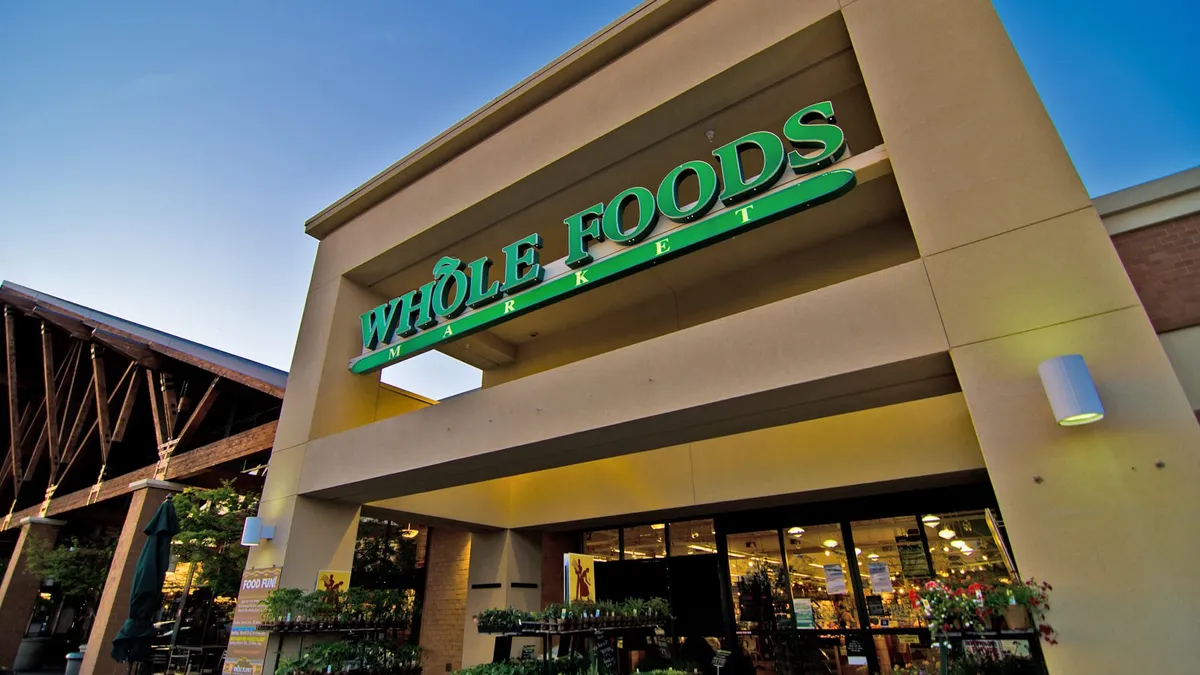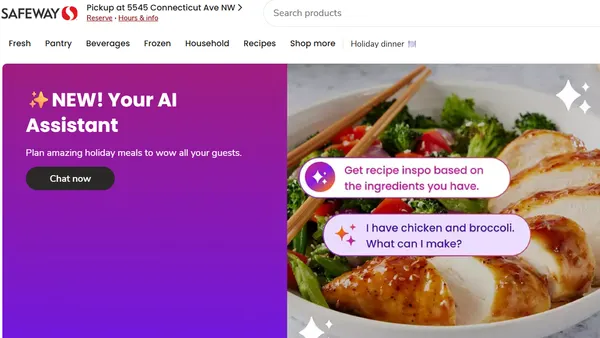UPDATE: Oct. 21, 2020: Whole Foods now offers pickup at all of its 487 U.S. locations, the grocer announced Wednesday. The service offers same-day fulfillment in one-hour windows and is free to Amazon Prime members who place orders of $35 or more.
The specialty grocer has rapidly expanded the service over the past several months, but it's hardly the only chain doing so, with Albertsons, Ahold Delhaize and Target having added click-and-collect to hundreds of stores. Other retailers, including Kroger and Albertsons, have waived pickup fees, making Whole Foods' "free" claim less of a point of differentiation. Walmart also offers no-fee pickup at the majority of its stores.
Whole Foods said that more than 40% of customers who use its store pickup service each month are doing so for the first time, and cited GlobalData research noting nearly 68% of consumers say they will continue using curbside pickup after the pandemic has subsided.
Dive Brief:
- Whole Foods Market plans to offer grocery pickup from 480 stores by the end of this month, a company spokesperson said.
- The natural foods retailer has tripled its pickup availability since March as e-commerce demand has soared during the pandemic, the spokesperson noted. Last December, the grocer only offered pickup at around 80 stores.
- Whole Foods currently has over 500 stores, including 487 in the U.S., according to the company’s webpage. It also offers two-hour grocery delivery in more than 2,000 cities and towns.
Dive Insight:
It’s no secret that online grocery demand has soared over the past several months. What’s surprising is the popularity of pickup, which according to several accounts has been preferred by consumers over delivery during the pandemic.
Digital consulting firm Brick Meets Click found in June that 54% of online grocery sales came through pickup compared to 46% through delivery. Less than 10% of consumers use both modes, Brick Meets Click partner David Bishop recently said in an interview, increasing pressure on grocers to offer both services and reach as many online shoppers as they can.
Instacart, which delivered orders at Whole Foods until 2018, has added 1,400 stores to its pickup service during the pandemic. Nilam Ganenthiran, Instacart’s president, said the growth of the pickup has outpaced delivery since March, and that the service now brings in more than $1 billion for the company.
Target's grocery pickup expansion has been even more rapid than Whole Foods', growing from a couple of hundred locations in the spring to more than 1,500 stores currently. And Ahold Delhaize, which turned on more than 600 click- and-collect locations over the summer, expects the business to soon account for half of its e-commerce sales.
According to Bishop, consumers like the lower fees that come with pickup. Some retailers, like Albertsons and Kroger, have waived their fees for the service during the pandemic. Shoppers also like having more control over when they get their orders and having the flexibility to walk into a store if they want to make incremental purchases.
Whole Foods' pickup service, which for Amazon Prime members doesn't carry a fee on orders over $35 and can be available within an hour, is a key part of the grocer's evolving e-commerce strategy. The majority of its stores also support same-day delivery, and last week the grocer opened its first permanent dark store in Brooklyn.
The next step for grocers is making pickup faster and easier. Some are adding geofencing technology to get orders out to shoppers as soon as they arrive at the store. Other firms are automating pickup, adding off-premise lockers and carving out more space in stores and parking lots for customers to get their orders.
According to reports, some Whole Foods stores are removing in-store dining and seating space to make room for pickup staging. One store in Atlanta earmarked $21,000 to switch dine-in seating over to a “grocery pickup area,” according to What Now Atlanta.











